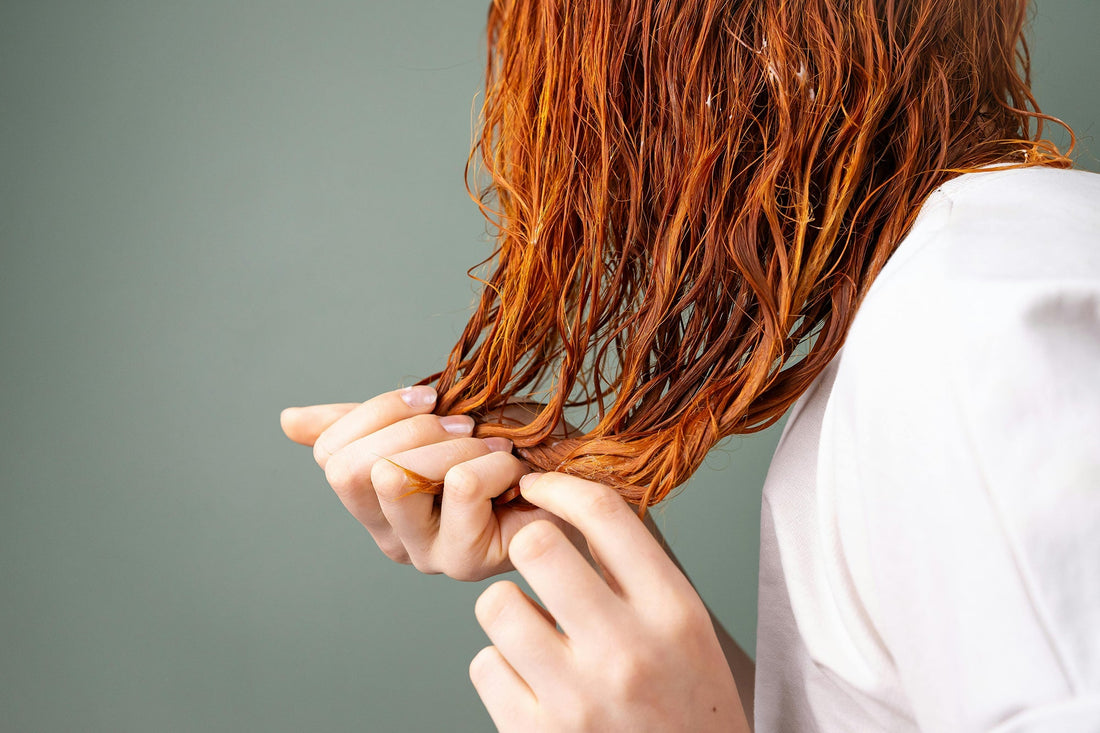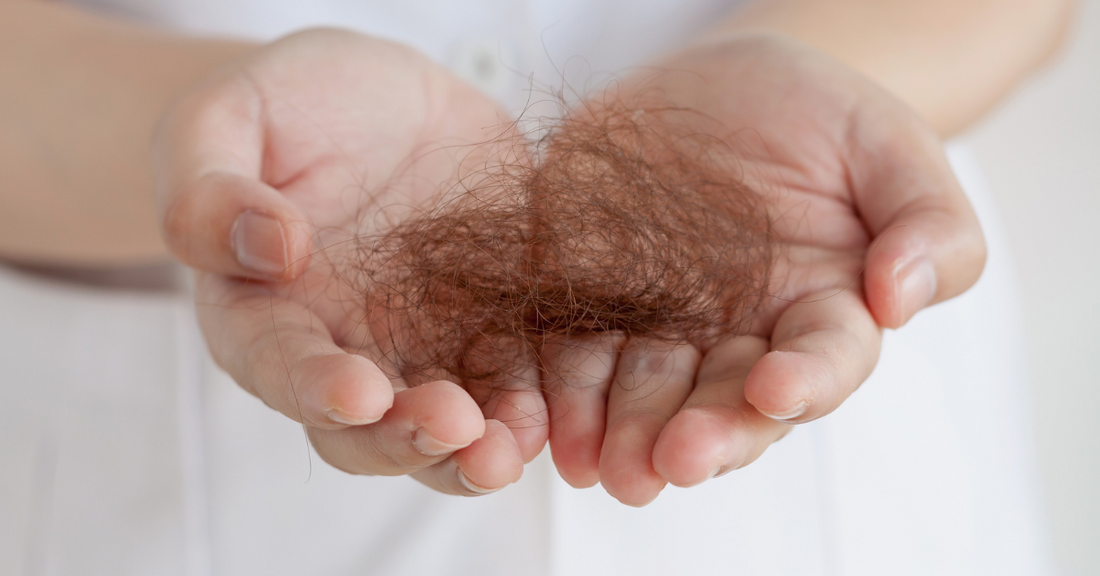Something that frequently panics hair loss treatment users is the possibility of increased hair shedding. If you have come to the decision to start a new hair loss treatment the last thing you want to experience is hair shedding a few weeks later, or is it?
If you are experiencing some hair loss after starting your new hair loss treatment you might panic. Is this normal? What should I do? Will I lose more hair if I continue with the treatment? These are all reasonable questions that we can answer for you here.
Although this only affects a small number of both men and women, it is something that can obviously be quite concerning for somebody who is using a treatment to stop their hair loss.
However, as discussed below, increased shedding in the early stages of starting a new hair loss treatment is, in fact, a positive sign! Why?! If this occurs, it actually means that your hair follicles are positively responding to the new treatment and new, stronger, and thicker hairs are beginning to grow in, pushing the old, thinner hairs out.
The Normal Hair Cycle
To understanding what may cause hair shedding after starting a new hair loss treatment, you need to understand the normal cycles of hair, and loss:
Hair has three phases: anagen, catagen, and telogen:
Anagen phase. Hairs remain in this phase for 3 to 6 years. The longer it lasts, the longer the hair grows. Normally, around 80 to 85% of the hairs on the head are in this phase.
Catagen lasts approximately 2 weeks. It allows the hair follicle to renew itself.
Telogen is the resting phase. The follicle lies dormant for 5 to 6 weeks. Normally between 12 and 20% of hairs are in this phase.
After the telogen phase, the anagen phase begins again. The existing hair is pushed out of the pore by the new hair and naturally sheds.
Everyone experiences hair loss, and this is a completely normal occurrence. On average, you can lose between 50 and 100 strands per day, and even up to 150 in some cases. It varies from person to person, and you may notice more shedding on days when you wash your hair, or when you are brushing it.
When the body sheds significantly more hairs every day, a person has excessive hair shedding. The medical term for this condition is telogen effluvium.
Excessive hair shedding-telogen effluvium-is common in people who have experienced one the following stressors:
- Lost 20 pounds or more;
- Given birth;
- Experiencing severe bouts of stress;
- Had a high fever;
- Undergone an operation;
- Recovering from an illness;
- Stopped taking birth-control pills
In the case of telogen effluvium, most people notice excessive hair shedding a few months after the stressful event. For example, a new mom can see excessive hair shedding about two months after giving birth. The shedding usually peaks about four months after giving birth. This shedding is normal — and temporary.
As your body readjusts, the excessive shedding stops. Within 6 to 9 months, the hair tends to regains its normal fullness.
If the stressor stays with you, however, hair shedding can be long lived and you should consult with a physician for advice.
What is Hair Shedding?
Hair shedding is not “losing hair”. This is one of the most important things you can glean from this Blog post. Shedding is in fact just the transition of follicles from phase to resting phase. They’re not dead. They’re not gone. They in fact “go to sleep”, with full intention to return several months later. Hair follicles work in cycles. Even the person not losing his or her hair goes through these same types of cycles. The hair will grow for awhile, and it will rest for awhile.
In the case of someone not using any hair loss treatments, but experiencing androgenetic alopecia (male or female pattern hair loss), shedding is typically that rest cycle, but with the addition of “miniaturization”. What does this mean? It means each time those hairs go dormant and come back, they come back weaker, thinner, and less pigmented. Ultimately a “net loss” of hair results.
Shedding is the transition of follicles from grow phase to the resting phase. Your hair follicles work in cycles; your hair will grow for a while, and then it will rest for a while. Shedding is therefore actually the dormancy of your hair follicles, not hair loss.
Am I Shedding Because I Started A New Hair Loss Treatment?
More than likely, yes. It is very common for you to experience this during a new hair loss treatment, but it is only a temporary phase.
Why Does It Happen?
After starting a new hair loss treatment, it is normal to experience hair loss a few weeks into the treatment. Usually this will occur when the thinner, weaker hairs, that were close to shedding any way, will fall out as the hair follicles become stimulated to grow new, thicker hair. This is known as the anagen stage (hair producing stage). This stage will push the thin hairs out, allowing for the thicker hair to grow in. As mentioned above, your hair follicles work in cycles, so once stimulated to eject the thin hair, it will go into its dormancy, or rest phase. It will then begin to restructure its process for producing new, thicker and stronger hair.
How Long Does It Last?
An increased shedding period a few weeks into starting a new treatment is totally normal and temporary. It can last a few weeks, and in some rare cases it can last a few months, but it will end. It can be a shock if you weren’t expecting it, but it is completely normal. If the individual continues their treatment consistently, despite the feelings of despair or hopelessness, shedding will end and the lost hair should be replaced with thicker, stronger and healthier hair. Please note, however, if increased shedding continues for longer than 4 weeks, you should consult your own physician to rule out other possible medical conditions.
Can Every New Hair Loss Treatment Cause Shedding?
Yes. All hair loss treatments, once started, can cause an initial shed because it is inevitable that the thinner, weaker hair will be shed by the hair follicles during their stimulation. If the hair loss treatment is genuine then you will always experience shedding, and it means that you know that the treatment is working, as it should.
So Shedding Is Actually A Sign That The Treatment Is Working?
Yes! It can be very frustrating to see shedding after starting a new treatment but it is actually a necessary process in order for your hair follicles to produce the newer, thicker, strong hair that you are looking for.
It may sound counter-intuitive, but this is one of the most important truths: shedding means the treatment is working. For example, when minoxidil is applied to stimulate hair follicles, the follicles must first regress. They shed the old fiber, reprogram themselves into larger follicles, and start producing new, improved hair fibers. This inevitably leads to a temporary shed phase. Simply put: you’re seeing your hairs respond to treatment. Its unfortunate that the first sign of new hair is the process of “losing” even more of it, but that’s the way it works.
Remember that it is a temporary phase – the shedding won’t last forever, and if you persist with your new treatment you will be happy with the end result in the long run. Shedding means the treatment is working.
Do Not Stop The Treatment Because Of Temporary Shedding!
There are two big mistakes people usually make when starting a new hair loss treatment product.
One is that people stop using the hair loss treatment too soon.
A lot of people think that if they do not see meaningful results after using the treatment for 1 or 2 months, it is ineffective. The fact is that it typically takes 3 to 5 months of consistent use to begin to see the first signs of hair. That is just how the body works. Any company claiming that their products can grow new, noticeable hair in a few weeks, is simply being dishonest.
The other mistake people usually make is that they get panicked and stop using the product after seeing increased hair loss.
Again, hair grows in a cyclical nature. As the new hairs grow in, it pushes out the older hairs, resulting in shedding. It is very much like losing baby teeth to make room for adult teeth. This increase in shedding is only temporary and should subside within a couple of weeks with continued treatment. With patience, the thinning hairs to prompted you to start the hair loss treatment in the first place will be replaced with the stronger, thicker and healthier hair that you desire. Please be patient!







